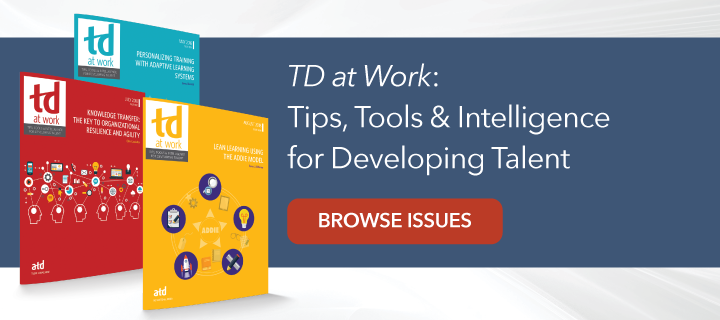Can you prove learning and development’s worth to the C-suite?
For many years, L&D used smile sheets to measure their training or the number of individuals in the training course. Gone are the days that these metrics are sufficient.
Instead, we are expected (both by the C-suite and in our own eyes) to show how learning contributes to the organizational bottom line. Thanks to artificial intelligence (AI) and analytics through dashboards that showcase metrics and data on various initiatives, we can measure and demonstrate that contribution.
First, as an L&D professional, you must understand what it is you’re trying to determine. Do you want to, for example, answer one of these questions?
- Do organizational safety scores improve as more associates complete the prescribed training?
- Does the consumption of the sales training program vary by region, and if so, why?
- Does our compliance training content properly map to regulations?
- Where are we able to reduce time to proficiency?
These questions can be answered through the use of AI, and proactive L&D teams that use AI can positively influence key components of learning:
- content delivery modalities that align with learning strategies and job functions
- course quality improvements, such as minimizing or eliminating extraneous content
- quantitative measurement of learner engagement, knowledge transfer, and course efficiency
- personalization based on individual learner behavior.
In “Fuel Business Strategies With L&D Analytics,” Gene Pease and Caroline Brant write that to tie learning to the organizational bottom line, you need to understand how your business makes money or, in the case of a nonprofit, what outcome you’re trying to achieve.
From there, you can look at the issues that are most challenging that can be influenced by learning. For example, is there room for operational efficiencies—that is, making a function more efficient? Is there opportunity for cost reductions, lowering either flexible or fixed expenses? Or perhaps there are prospects for growth initiatives, increasing sales or market share.
To be effective in using analytics in the context of L&D, an L&D practitioner will need to engage with a spectrum of stakeholders—not only the C-suite, but also subject matter experts and the business owner—with the challenge you’re trying to meet, who can help you develop metrics to measure. You’ll also work with data owners, who may be housed in teams across your organization.
Tapping AI and dashboards will require new knowledge and skills for the L&D practitioner. Pease and Brant explain that “Many times, L&D teams and their organizations opt for a combination of build, buy, and borrow techniques in the early stages of implementing dashboards to develop the necessary skill sets.”
A final word about using analytics and dashboards: Be sure the process makes good business sense. This often means starting out small and growing your L&D analytics program.





